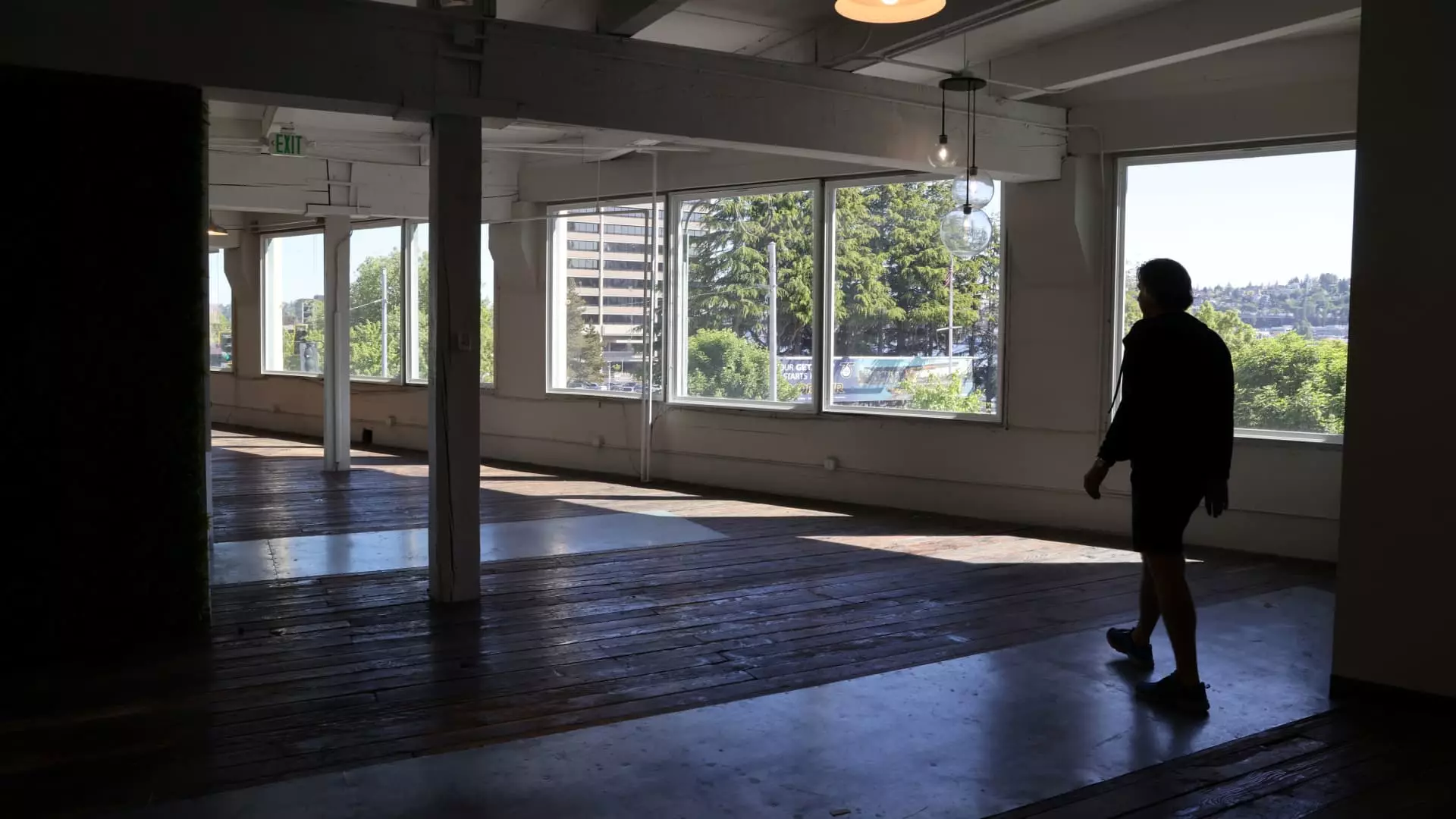The U.S. office market is undergoing a seismic transformation, one that seems to finally challenge the norms of a once-stagnant industry. The latest data from CBRE Group reveal a historic turning point: for the first time in over 25 years, office conversions and demolitions are outpacing the construction of new office spaces. This is not just incremental change; it’s a solid indication that the traditional workspace paradigm is being thoroughly redefined. As the pandemic catalyzed an unprecedented embrace of remote work, the repercussions on our office space consumption have become glaringly clear. What we are witnessing is much more than a mere statistical anomaly. It’s the dawn of a new era for how we conceptualize workspaces.
A Market in Flux: What the Numbers Reveal
According to CBRE’s extensive research, an astonishing 23.3 million square feet of office space is projected to be demolished or converted by the end of this year — a juxtaposition to the mere 12.7 million square feet of space expected from new construction. This stark contrast underscores a fundamental change in the urban landscape as companies adjust to a post-pandemic world where the desire for less office space is growing more apparent. Yet, the irony is not lost: while vacated spaces reach all-time highs with a 19% vacancy rate, there are also signs of recovery. Leading firms are now pushing for a return to in-office work, hoping to reclaim some semblance of ‘normal.’ However, this pushback against remote work must be carefully scrutinized, as it risks overlooking the shifting winds of employee preferences.
The Dueling Forces of Supply and Demand
Interestingly, the net absorption rates tell a contradictory story. While the office landscape faces the pressure of increasing vacancies, we’ve recently seen net absorption turn positive for four consecutive quarters — a welcome shift from the previous six quarters of losses. The empirical data suggests demand is climbing, yet it’s crucial to approach this with some skepticism. Even if office leases are increasing by 18% year-on-year, the overarching narrative hints at workers feeling cornered into returning to office spaces that may not resonate with their evolving needs and desires. There’s a danger in romanticizing a return to the office when so many employees have adjusted to more flexible, hybrid arrangements that prioritize their well-being over blind allegiance to outdated corporate structures.
The Emergence of Urban Transformation
Despite the uncertainty, the trends indicate a burgeoning opportunity for reimagining urban spaces. The future holds promise as obsolete office buildings are repurposed for the “highest and best use,” which is likely a nod toward developing multifamily living spaces amidst diminishing commercial needs. The statistic that around 33,000 apartment units have emerged from office-to-residential conversions since 2016 should be cause for celebration. However, it also raises pointed questions: What does it say about our priorities when a prominent sector like commercial real estate is pivoting toward fulfilling housing needs instead of steadfast employment solutions? As cities evolve, so too should our understanding of what spaces should serve what purposes.
Challenges Ahead: The Road to Repurposing
Still, the optimism for transforming office space does not come without its challenges. The path forward is obstructed by substantial headwinds, including rising costs for construction and shrinking opportunities for suitable offices ready for conversion. These hurdles jeopardize the acceleration of much-needed conversions and heighten the risk of stagnation in our efforts to revitalize urban areas. If we are to achieve meaningful adaptation of our office spaces, innovative strategies must emerge. The key will be how swiftly developers can pivot to meet this urgent demand — a potential that now teeters on the edge of practicality and idealism.
Ultimately, the reconfiguration of the American office market represents not just a shift in commercial real estate, but a cultural awakening. It is an opportunity to redefine the role of physical workspace in an era where connection, flexibility, and well-being must take precedence over outdated norms. The fragments of the traditional office landscape are falling away; how we choose to rebuild determines not just the health of the commercial market, but the quality of life for all who reside within these evolving urban environments.

